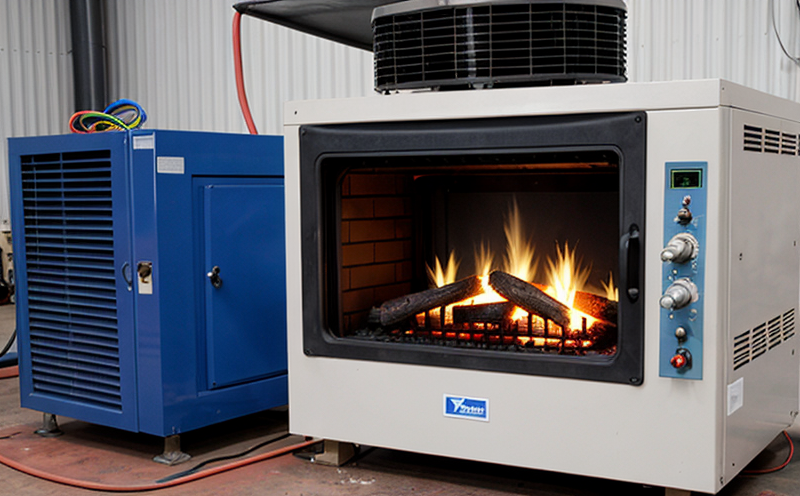ISO 11357 Thermal Analysis Testing of Lighting Polymers
The International Organization for Standardization (ISO) has established ISO 11357 as the standard method for performing thermogravimetric analysis (TGA) and differential scanning calorimetry (DSC) on lighting polymers. This service is crucial for ensuring that light sources and their components meet stringent quality, safety, and reliability standards.
Thermal analysis techniques are essential in the evaluation of lighting polymers because they provide insights into critical properties such as decomposition temperature, glass transition temperatures, melting points, and crystallinity. These tests help manufacturers optimize material selection, improve product performance, and ensure compliance with industry regulations.
The testing process involves subjecting polymer samples to controlled heating or cooling in a precise atmosphere, typically under nitrogen or argon. The sample's mass change is monitored during TGA while DSC measures heat flow as the temperature changes. These tests are particularly important for lighting polymers due to their complex thermal behavior and the need to balance performance characteristics like durability, flexibility, and electrical insulation.
One of the most critical aspects of this testing is understanding how different environmental factors can affect a polymer's thermal stability. For instance, exposure to high temperatures during manufacturing or operation can lead to degradation, which could impact the longevity and efficiency of light sources. By using ISO 11357, manufacturers can identify these vulnerabilities early in the development process.
In addition to identifying potential weaknesses, this testing also helps in optimizing the formulation of lighting polymers. For example, adjusting the ratio of additives or changing the molecular weight distribution can significantly impact a polymer's thermal stability and performance. Through rigorous testing, manufacturers can fine-tune their formulas to achieve optimal results.
The results from ISO 11357 are essential for quality assurance and compliance with international standards such as IEC 60968-2. These tests ensure that lighting products meet the stringent requirements set by regulatory bodies, thereby protecting consumer safety and environmental sustainability.
| Application | Description |
|---|---|
| LED Manufacturing | Ensuring the stability and reliability of LED components under high-temperature conditions. |
| CFL Production | Evaluating the thermal characteristics of phosphor coatings for long-term performance. |
| Halogen Lamp Design | Optimizing the design to ensure safe and efficient operation without overheating. |
| Laser Diode Assembly | Testing for thermal stress in laser diodes to enhance product longevity. |
Why It Matters
The importance of ISO 11357 testing cannot be overstated, as it directly impacts the performance and safety of lighting products. By understanding the thermal behavior of polymers used in these components, manufacturers can make informed decisions that lead to more robust and efficient designs.
Thermal stability is crucial for long-term reliability, especially when considering the operating environments where light sources are deployed. For instance, outdoor fixtures may experience extreme temperature fluctuations, while indoor applications might involve continuous operation at high temperatures. Ensuring that materials can withstand these conditions without degradation or failure is paramount.
In addition to performance enhancement, thermal testing also contributes to safety compliance. Regulatory standards like IEC 60968-2 mandate specific thermal properties for lighting products. Non-compliance could lead to recalls and legal issues, which are costly and damaging to a company's reputation.
The data obtained from ISO 11357 testing is invaluable for research and development teams. It provides them with actionable insights that can be used to innovate and improve product designs continuously. This ongoing improvement cycle ensures that lighting products not only meet current standards but also anticipate future challenges.
Benefits
- Enhanced product performance through optimized material selection.
- Improved quality assurance by identifying potential issues early in the development process.
- Increased safety compliance with international standards such as IEC 60968-2.
- Potential cost savings from reduced product recalls and warranty claims.
- Faster time-to-market for new products by streamlining testing procedures.
- Better environmental sustainability through the use of more efficient materials.
Industry Applications
- LED Manufacturing: Ensuring the stability and reliability of LED components under high-temperature conditions.
- CFL Production: Evaluating the thermal characteristics of phosphor coatings for long-term performance.
- Halogen Lamp Design: Optimizing the design to ensure safe and efficient operation without overheating.
- Laser Diode Assembly: Testing for thermal stress in laser diodes to enhance product longevity.





